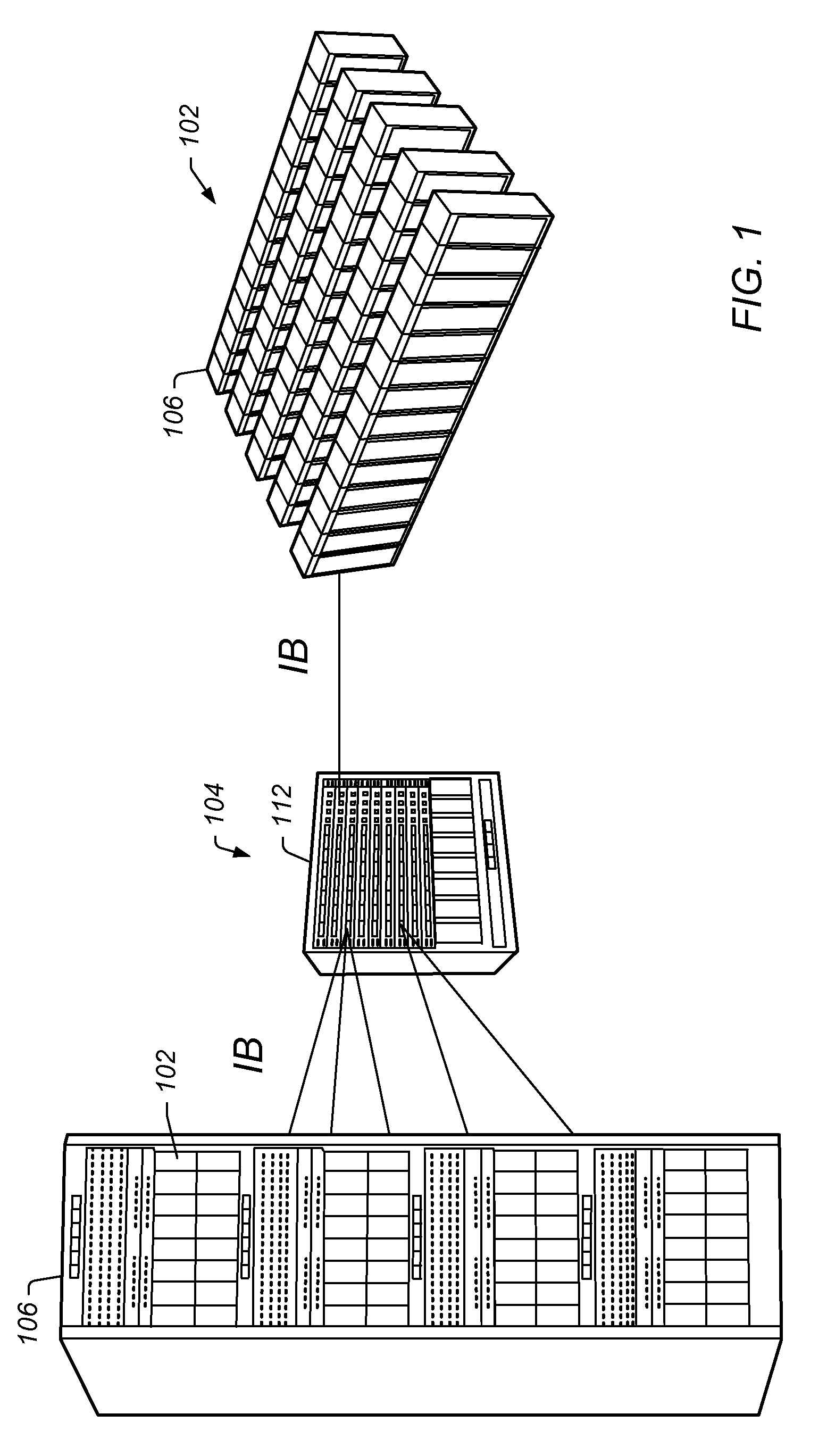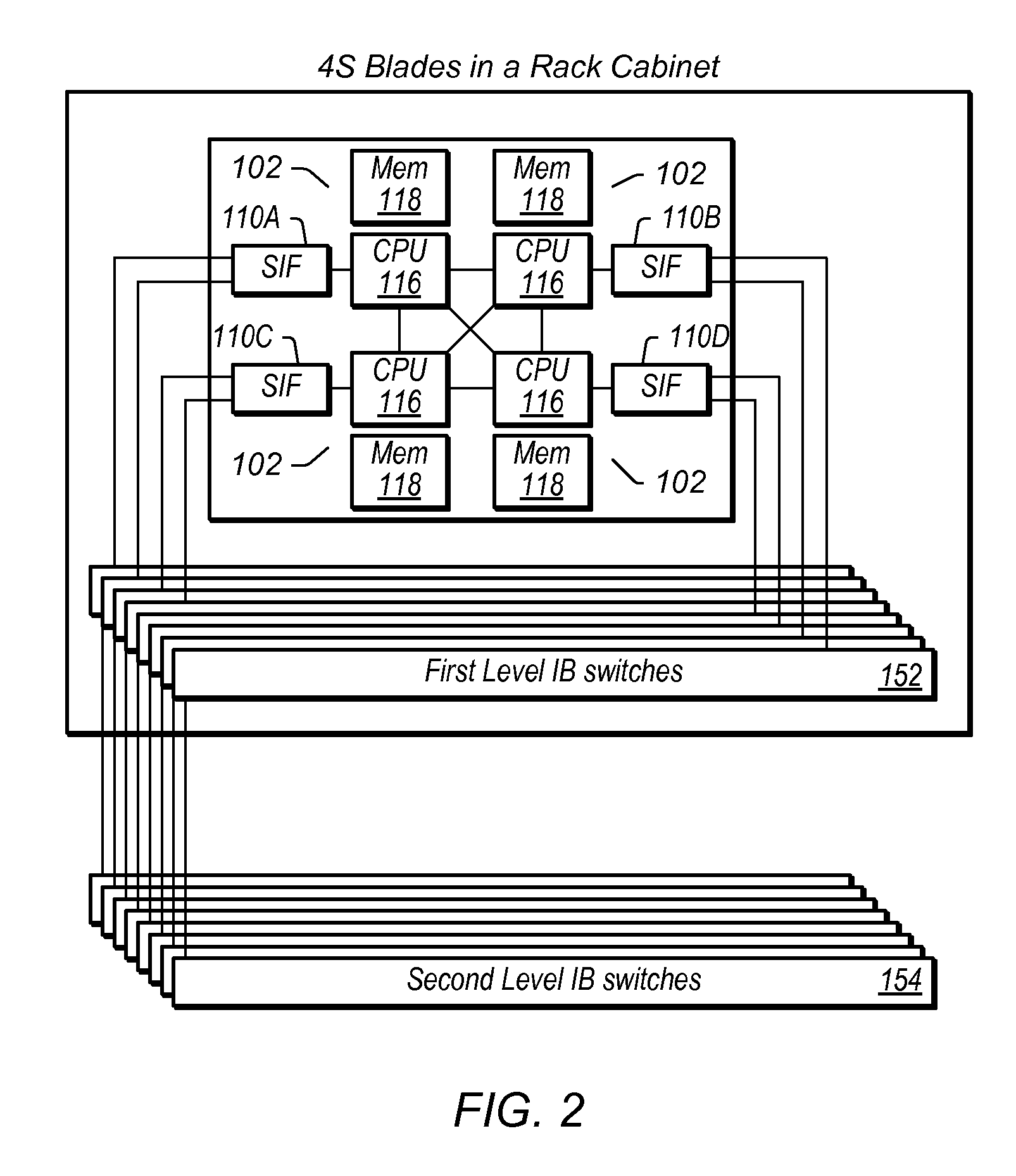Performing Remote Loads and Stores over Networks
a remote load and network technology, applied in the field of clusters, can solve the problems of inability to tolerate failures in intra-server networks and inapplicable constraints, and achieve the effects of improving cluster performance, efficient handling of small payloads, and improving the performance of servers within clusters
- Summary
- Abstract
- Description
- Claims
- Application Information
AI Technical Summary
Benefits of technology
Problems solved by technology
Method used
Image
Examples
Embodiment Construction
[0042]FIG. 1 illustrates an exemplary cluster system according to one embodiment of the invention. As shown, the system may comprise a plurality of computer systems or compute nodes 102 that are connected together by an interconnect 104. The compute nodes 102 may take various forms. In the embodiment of FIG. 1, the compute nodes 102 comprise blade servers that are housed in one or more racks 106. The interconnect 104 may comprise a fabric switch 112 as shown. The interconnect 104 may support only a single protocol, or may support a plurality of protocols. In the exemplary embodiment shown, the interconnect 104 may support the Infiniband (IB) protocol.
[0043]On the left side of exemplary FIG. 1, the cluster comprises one or more racks 106 each comprising 4 blade server chassis' which each comprise a plurality of blade servers (compute nodes) 102. The blade servers 102 on the left connect to the fabric switch 112 through Infiniband. In one embodiment, the blade servers 102 connect to t...
PUM
 Login to View More
Login to View More Abstract
Description
Claims
Application Information
 Login to View More
Login to View More - R&D
- Intellectual Property
- Life Sciences
- Materials
- Tech Scout
- Unparalleled Data Quality
- Higher Quality Content
- 60% Fewer Hallucinations
Browse by: Latest US Patents, China's latest patents, Technical Efficacy Thesaurus, Application Domain, Technology Topic, Popular Technical Reports.
© 2025 PatSnap. All rights reserved.Legal|Privacy policy|Modern Slavery Act Transparency Statement|Sitemap|About US| Contact US: help@patsnap.com



